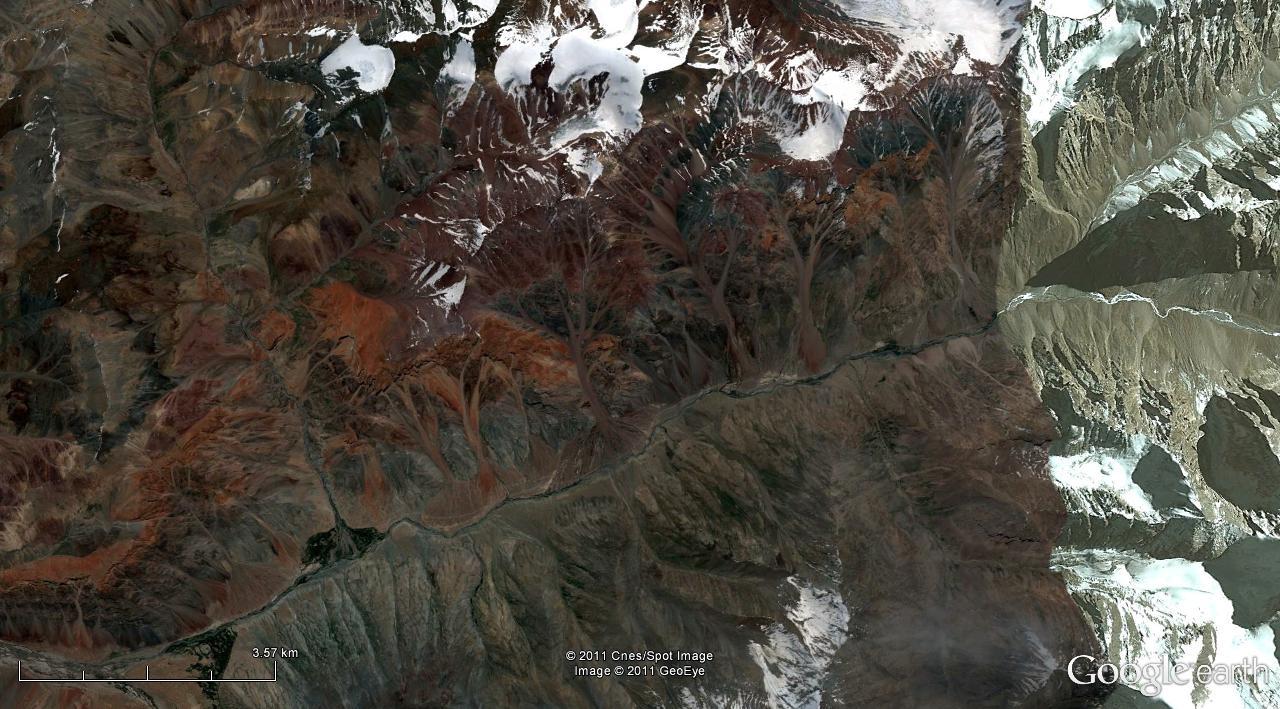I got WoGE #321 rather quickly, so I feel a little guilty. Perhaps because I was actually trying to work at the time. But I saw @FelixBossert tweet about it, took a peek and instantly recognised it as a drumlin field from the British Isles. Spotting the bit of sea on the right hand side helped me narrow it down quickly to Donegal in the north of Ireland. As it turned out I’ve drunk Guinness, if not in the actual image, at least nearby.
To assuage my irrational guilt, I’ve tried to put this post up nice and quick. Also I’ve chosen an area that, as far as I’m aware, none of you players of the game have drunk Guinness in. I won’t guess how hard it is, but I’ll not invoke the Schott Rule, so no restrictions.
If you have no idea what I am talking about, you are in for a treat! This is a game that is an excellent excuse to trawl through Google Earth. Rules are best expressed here, but in summary, look at the entire Earth’s surface until you find the area shown in this picture. Then find out about its Geology. Then add the location and Geological description in the comments. If you are first, you get the honour of hosting the next one. If you are a veteran WoGEr, this is the first one I’ve hosted on my new blog, so please look around while you’re firing up Google Earth.
I’m looking for a mention of a fairly specific piece of Geology, but this may be a little ambitious of me. We’ll see, but enjoy the lovely picture any way (click on it for a bigger one). The image is rotated so that the North arrow is pointing to somewhere between 9 and 10 o’clock. Or a vertical arrow on the image points east, if that makes more sense.
PS this post vanished and was hosted by Felix for a short while due to technical difficulties, thanks again Felix.


This is the Kurgiakh Valley in the Zanskar region of the Northwest Himalayas.
33.02N 77.24E
This seems to be a popular route for the tourists who visit this part of Indian-controlled Kashmir to see spectacular mountains and remnants of traditional Tibetan culture. Geologically speaking, the Zanskar Shear Zone passes through this image. This is an area with geology far too complex for me to understand, but very thoroughly described at http://comp1.geol.unibas.ch/~zanskar/index.htm for those who are interested. Two interesting features that are clearly visible in the WOGE picture are the Sarchu fault (a very straight valley in the upper left hand corner) and Gumburanjan mountain (the sharp peak near the right edge that cast a triangular shadow across the valley). Gumburanjan is made of Leucogranite intruded about 22 Ma. It is also a very photogenic peak with a name that literally means something like “natural monastery” (at least according to the photo tags on Google Earth). I am not sure if I mentioned the “specific piece of geology” that you were thinking of, but I look forward to finding out what it was.
We have a winner!
The feature I was looking for was the Zanskar Shear Zone so spot on.
This is a section of an extensional feature that goes along the entire Himalayas, including in the top section of Mt Everest. The question of why you get extensional features in the heart of a compressional orogeny is a very interesting one. I can feel a blog post coming on.
I urge you all to look at pictures of Gumburanjan, either via Google Earth or here .
Also not the red and green sedimentary layers. Having been there I know that the red if physically above the green and that there are numerous landslides or red down over the green in the right hand side.
As usual, Matthew, please post your link in here when ready.
Woge 323 now at http://matthews-woge.blogspot.com/2011/12/when-i-saw-rugged-mountains-in-woge-322.html
Pingback: What Geology did to me #1 – beard | Metageologist
Pingback: Granitic gorgeosity in the high Himalaya | Metageologist